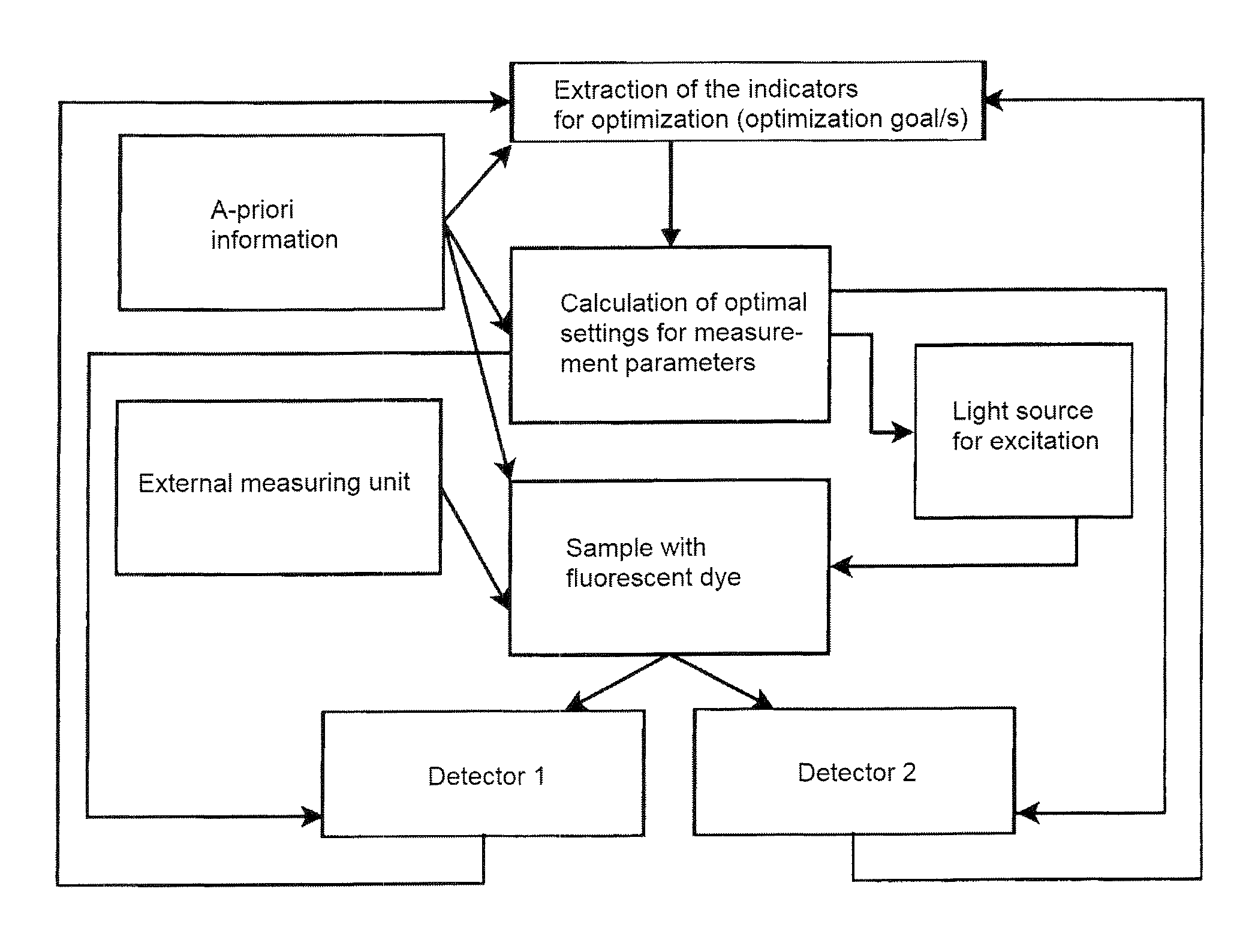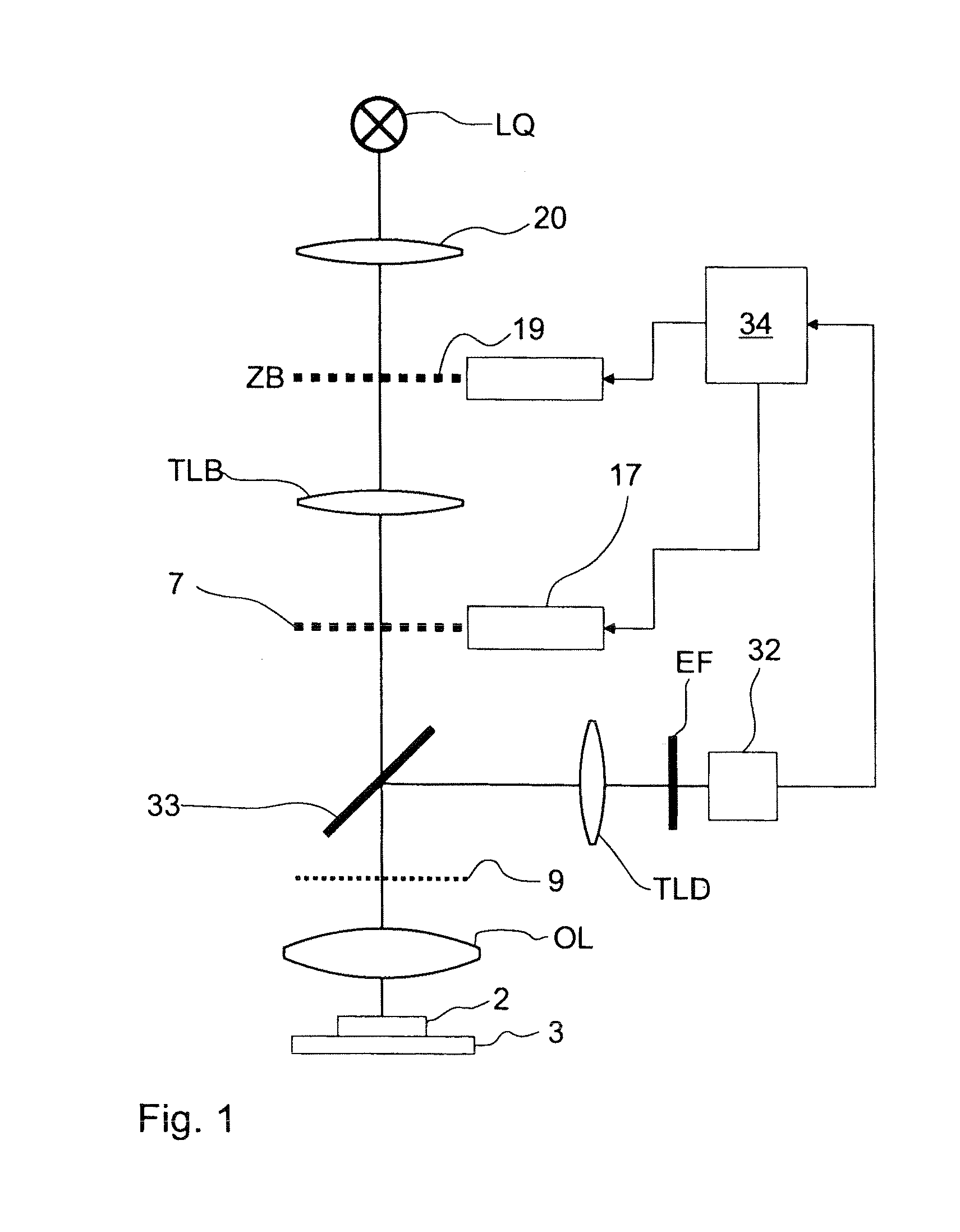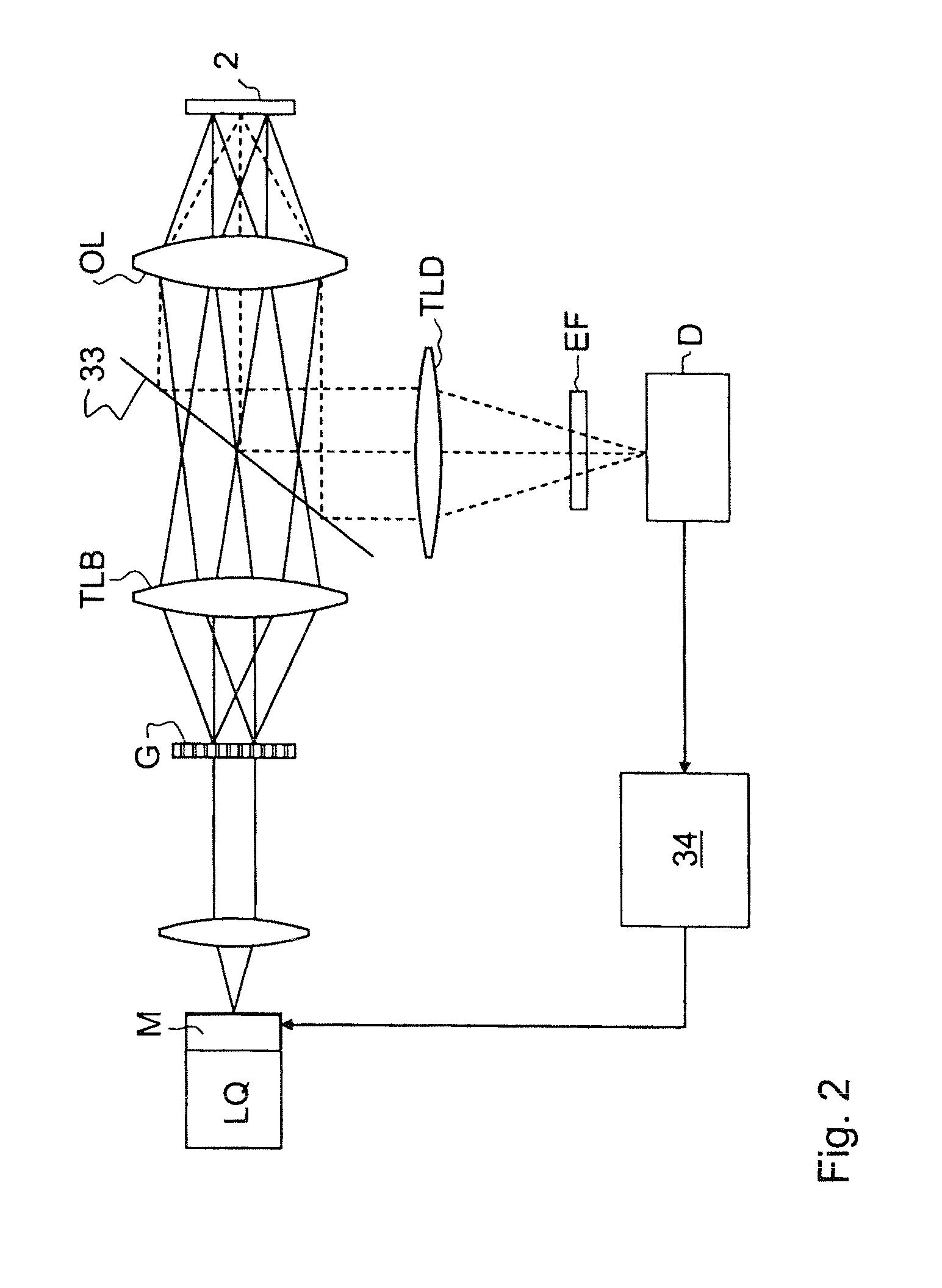Methods and apparatuses for structured illumination microscopy
a structured illumination and microscopy technology, applied in the field of structured illumination microscopy, can solve the problems of reducing the effective frame rate, difficult reconstruction of the result image, and fundamental limitations in the resolution power of the microscope, and achieves high signal-to-noise ratio, high excitation power, and high dynamic range
- Summary
- Abstract
- Description
- Claims
- Application Information
AI Technical Summary
Benefits of technology
Problems solved by technology
Method used
Image
Examples
Embodiment Construction
[0058]It is to be understood that the figures and descriptions of the present invention have been simplified to illustrate elements that are relevant for a clear understanding of the present invention, while eliminating, for purposes of clarity, many other elements which are conventional in this art. Those of ordinary skill in the art will recognize that other elements are desirable for implementing the present invention. However, because such elements are well known in the art, and because they do not facilitate a better understanding of the present invention, a discussion of such elements is not provided herein.
[0059]The present invention will now be described in detail on the basis of exemplary embodiments.
[0060]Identical parts have identical reference numerals in all of the drawings.
[0061]FIG. 1 shows a schematic view of the beam path of an arrangement for widefield fluorescence microscopy serving by way of example, in which the SIM and SPEM methods which are improved by the inv...
PUM
| Property | Measurement | Unit |
|---|---|---|
| size | aaaaa | aaaaa |
| size | aaaaa | aaaaa |
| thickness | aaaaa | aaaaa |
Abstract
Description
Claims
Application Information
 Login to View More
Login to View More - R&D
- Intellectual Property
- Life Sciences
- Materials
- Tech Scout
- Unparalleled Data Quality
- Higher Quality Content
- 60% Fewer Hallucinations
Browse by: Latest US Patents, China's latest patents, Technical Efficacy Thesaurus, Application Domain, Technology Topic, Popular Technical Reports.
© 2025 PatSnap. All rights reserved.Legal|Privacy policy|Modern Slavery Act Transparency Statement|Sitemap|About US| Contact US: help@patsnap.com



